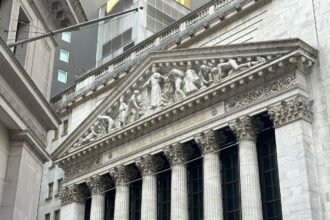The U.S. dollar (USD) remains the dominant global currency, with its status as the world’s top currency being “almost unchallengeable,” according to Alpine Macro analysts.
This dominance is primarily attributed to the U.S.’s superior naval, air, and cyber power, which they state firmly supports the USD’s global preeminence.
Despite potential cyclical depreciations, the USD’s long-term status is secure. Alpine Macro notes, “The USD could depreciate cyclically, but its long-term status as the top global currency is almost unchallengeable, despite a few ‘what if’ scenarios.”
The persistent fears about the USD losing its dominant status, especially during economic downturns or geopolitical shifts, are often exaggerated, according to the firm.
They believe efforts to de-dollarize could benefit certain assets, particularly gold, but are unlikely to significantly impact the USD’s supremacy.
Historical and geopolitical factors heavily favor the dollar, adds Alpine. “There are strong geopolitical rationales why a shift away from the USD is improbable in the next decade or so,” the analysts explain.
The U.S.’s military and alliance systems are also said to play a crucial role. They explain that the strongest naval powers historically control trade routes and impose their currencies globally, a pattern that continues with the U.S.’s control over naval, air, and cyber domains.
Furthermore, the firm highlights the extensive network of U.S. alliances supporting the USD.
“U.S. allies and countries reliant on U.S. for their security are more likely to hold their foreign reserves in USD,” according to research cited by Alpine Macro.
Additionally, they state the lack of viable alternatives fortifies the USD’s position, with the firm noting that no other currency meets the comprehensive criteria required to challenge the USD.
“The only theoretical competitor to the USD is the EUR,” but it falls short due to the Eurozone’s limitations in military capabilities and market liquidity.
Overall, the firm states: “Investors should instead focus on the USD as a cyclical asset moved by the usual economic and financial factors.”


















